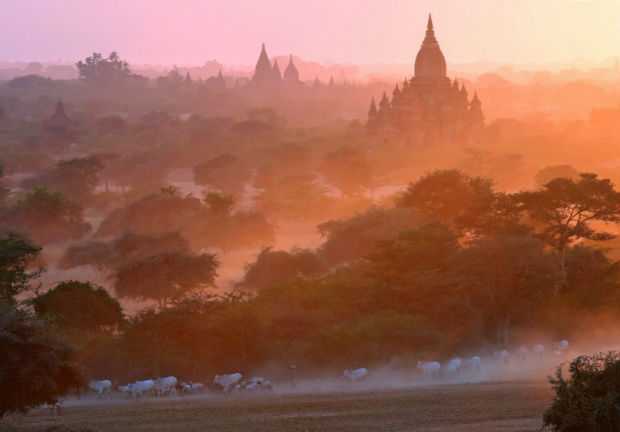
YANGON — Visitors to Myanmar’s ancient capital Bagan will no longer be able to climb the venerated pagodas for a view of the country’s most famous archaeological site following a government edict railing against “disgraceful” tourist behavior.
The ban, which starts March 1, will end the daily ritual that sees hundreds of tourists and local pilgrims scaling the ancient structures to watch the sun set over a vast plain dotted with more than 2,500 Buddhist monuments.
Myanmar’s Ministry of Culture said the move would protect the buildings, considered holy sites by many locals, while also averting potential danger for those climbing.
“Furthermore, despite warnings, people who climb the pagodas often behave badly, in a way that is culturally disgraceful such as wearing inappropriate clothing, dancing and sleeping (on the monuments),” the ministry said in a post on its official Facebook page.
“We would like to announce that no one will be permitted to climb on the pagodas for any reason from March 1 onwards,” it concluded in the statement published on Monday.
Built between the 10th and 14th centuries as part of a powerful early kingdom, Bagan’s temples are deeply revered in the Buddhist-majority nation and are also one of the country’s most popular tourist destinations.
After years in the wilderness under an isolationist junta, Myanmar was quickly embraced as a hot choice for holidays after outright military rule ended in 2011.
The country began appearing on lists of must-visit destinations, often accompanied by bird’s eye view images of Bagan’s pagodas scattered across a mist-drenched landscape.
Even the Ministry of Tourism has declared that “a panoramic view of this land at sunset will leave you with a lingering sense of awe and wonder”.
According to its figures, nearly half a million foreign tourists, including package tourists and independent travellers, arrived through Myanmar’s main city gateway Yangon last year, more than double the number in 2011.
Many make a beeline for Bagan, a trend that is expected to continue despite the new rules.
“Bagan can offer other pleasures for tourists,” said Naung Naung Han, of the Union of Myanmar Travel Association, which represents private tour operators.
But he said those not able to climb the structures to see a sunset at Bagan would be missing out.
“For a foreign tourist, such an experience could be an unforgettable moment in their life,” he told AFP.
Myanmar is eager to see Bagan designated as a United Nations Educational, Scientific and Cultural Organization (UNESCO) world heritage site.
But experts say haphazard renovation work on some of the temples under the junta, including building hundreds of new structures over ancient foundations, has irreversibly damaged the landscape.
RELATED STORIES